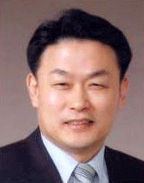

What steps have been mitigated to take Korean Textiles ahead on technology and research & development front?
After the Korean War (1950-53), South Korea remained a poor country that exported wigs and cheap clothes until the 1960s. In 2006, or just in four decades, it became the 11th country in the world to break the record of $300 billion in exports.
But the textile industry, which represented the country in the era of rapid economic development in the 1970s and 1980s, gave way to the information-technology (IT), automobile and other high-tech industries in tandem with economic growth. At the moment our companies try to catch up with the advanced technology of advanced fashion, fabric, etc. on account of their not sufficient investment for the development of state-of-the art technology.
To begin with, we would request you to share an overview of the Korean Textile & the Garment industry with our readers? Can they be supported with statistical figures too?
Korea has a relatively large, vertically integrated from up-stream to down-stream, textile and fashion industries which have played a key role in the process of the nation's modernization, contributing significantly to employment, production and exports for the last several decades. Korean textile and fashion industries represented 14.7% of the total number of manufacturing enterprises in 2005.
Also, Korean textile and fashion industries maintained its prestige as a largest job maintaining industry, recording 9.6% of total manufacturing employment and account for 4.4% of total production in 2005.
As of 2006, Korean textile and fashion industries represent 4.1% of total exports and have played a key role with trade surplus accounting for 32% of the total trade surplus.
Position of Korean Textile Industry
| Category | Companies (Number) | Employment (Number) | Production (Billion Won) | Exports(2006) (Billion USD) | Trade Balance(2006) (Billion USD) |
| Manufacturing | 117,205 | 2,866 | 851,789 | 325.5 | 16.1 |
| Textile & Fashion (Share: %) | 17252 (14.7) | 274 (9.6) | 37897 (4.4) | 13.2 (4.1) | 5.2 (32) |
What is the role of your department in the development of the Textile & Apparel industry in Korea?
The role of our division is to accelerate the modernization of the textile industry and to reinforce the international competitiveness of textile products in order to contribute to the growth of the national economy.
What benefits has the Korean textile industry been able to realize post the 2005 quota era?
South Korea’s textile industry was hit hard by the liberalization of textile trade in 2005, which further lessened the room for exports.
However, the situation reversed itself in 2006. Exports rose 2.3 percent from 2006, as oversupply and price-cutting competition were brought to an end. Textile firms also tried to expand production of high-value added goods and fortify overseas marketing.
What is the extent of backward and forward integration that has been made possible in the textile industry?
One of the key factors for the future of the Korean textile industry is its utilization of the country’s global leadership in the digital sector. Advances in IT world are being combined with traditional textile technologies to generate enormous potential and new spin-off segments.
We are pursuing 'informationization' projects to be adapted by the domestic industry while continuing to pursue ongoing supply chain management systems. The industry is focused on database construction and development for sourcing, production and sales . In addition, advances in e-trade infrastructure are providing momentum for exploring new markets at home and abroad.
On a global platform, how competitive is the Korean textile industry in terms of quality and cost etc..?
The Korean textiles and apparel industry has played a major role in the development, but the competitiveness is decreasing mainly due to labor costs.
Where do you foresee the Korean textile industry in next 2 to 3 years from now?
Despite some unfavorable factors such as high crude oil prices and the rapid growth of the Chinese textile industry, there are also favorable factors such as the envisioned implementation of the free trade agreement (FTA) with the United States.
The inter-Korean economic project in the Gaeseong Industrial Complex would also help the South Korean textile industry see a larger chance for development and exports.
Can you please throw some light on the investment opportunities and incentives available in Korean Textile and Garment Industry for the investors across the globe?
The Korean industry becomes a more active player in shaping the new global textile paradigm. This means adopting a more proactive role in international cooperation activities. With the repeal of the global textile quota system and ongoing trade liberalization, we try to adopt global standards to help ease potential trade friction with other countries.
A parting message to all our valued readers and investors across the globe?
Korea and India have steadily developed a close and cooperative partnership as two major countries of North and South Asia respectively, sharing common values of market economy. I hope the bilateral cooperation will be more strengthened in the future.
DISCLAIMER: All views and opinions expressed in this column are solely of the interviewee, and they do not reflect in any way the opinion of Fibre2Fashion.com.